The new trend in running shoes is maximalism: beefed up shoes with lots of cushion. Maximalism was triggered by the growing popularity of shoes made by the brand Hoka One One. Hoka started as a niche brand within the trail ultrarunning community, and has expanded its line to include road shoes as well.
I’ve posted a number of guest reviews of Hoka shoes, and when I do I sometimes get complaints from readers that I’m getting away from my minimalist roots. My response to this is that my goal in writing this blog is to help people enjoy running, and to help them find shoes that allow them to do so. I’m not so concerned with what those shoes look like as long as they help a runner to run pain free. My blog has a minimalist bias to it because I have a minimalist bias to my own shoe preferences, but my wife runs in Hokas and I’m not going to kick her out of the house as a result. Hokas and the amply cushioned Altra Torin have allowed her to run pain free for the past 9 months. They succeeded for her where minimal did not. And she’s happy, which makes me happy.
I’m not exactly sure who coined the term maximalism. I’m definitely guilty of using it, and though brands are not necessarily using the term themselves, they do seem to be marketing shoes in a way to latch onto this trend (using words like “plush” or “soft” instead). My problem with maximalism isn’t that I hate the shoes, it’s that I think I hate the term. Just as with minimalist, maximalist has no coherent meaning as a defined category of footwear. I think most people associate minimalist with a lack of cushion, and maximalist with a lot of cushion. The problem with this is that if we use the original Hoka models as something of a benchmark, then a lot of the shoes that are associated with the maximal moniker don’t really belong there.
In an article on the maximal trend, Brian Metzler of Competitor.com includes a slideshow with 5 “maximal” shoes. These are the Altra Olympus, Brooks Transcend, Hoka Conquest, New Balance Fresh Foam 980, and Vasque Shape Shifter UIltra.
Let’s look at the specs for these shoes (stack measurements via Running Warehouse for all but the Vasque shoe):
Altra Olympus: 36mm heel, 36mm forefoot; 10 oz
Brooks Transcend: 30mm heel, 22mm forefoot; 11.8 oz
Hoka Conquest: 34mm heel, 28mm forefoot; 11.9 oz
New Balance Fresh Foam 980: 25mm heel, 21mm forefoot; 9.1 oz
Vasque Shape Shifter UItra: 28mm heel, 22mm forefoot; 10.5 oz
There are a few points to make here. First, all of these shoes have quite a bit of cushion, but the drop varies from 0 in the Altra Olympus to 8mm in the Brooks Transcend. All are thus lower drop than most traditional running shoes, so in a sense these shoes are taking attributes from minimal and traditional shoes and combining them in new ways. I’d go so far as to say that maximal grew out of minimal – a lot of runners liked certain aspects of minimal shoes but wanted more cushion (or a lot more cushion in some cases!). Thinking along similar lines, Running Warehouse had this to say on the topic of maximal shoes:
“So is this new trend just a revamp of plush traditional trainers like the Nimbus or the Vomero? Not quite, though some premium trainers are going in that direction. Instead, shoe manufacturers are looking for ways to incorporate learnings from minimalism into shoes with a lot more protection underfoot.”
Second, the amount of cushion in these shoes is all over the place.
Take the New Balance Fresh Foam 980 for example. At 25mm stack in the heel, 21mm in the forefoot, and 9.1oz in weight it has almost identical specs to the Saucony Mirage, which is part of Saucony’s “natural running” collection. And it has less cushion under the heel than the Asics Super J33, which is Asics’ “natural running shoe for overpronators.”
The Brooks Transcend, for another example, has almost the same cushioning specs as the Asics Kayano (30mm heel, 20mm forefoot) and Brooks Adrenaline (31mm heel, 19mm forefoot). Brooks marketing for the Transcend urges you to “Explore plush new worlds and leave behind the traditional laws of comfort…” and ads feature the shoe floating on clouds. Maybe it’s a softer, plusher ride, but in terms of amount of cushioning it’s really not a lot different than most other traditional shoe on the market right now. In fact, only a few of these so-called “maximal” shoes are really maximal above and beyond what some of the best selling shoes out there have had for years.
You might say that a shoe can be maximally cushioned with lower stacks if the sole is very soft. I could agree with this – the Skechers GoRun Ultra at 27mm heel, 23mm forefoot is a good example of a shoe like this. But early reports on the New Balance 980 are that it is anything but pillowy soft. And there are some much lower profile shoes that have squishy soles – the Mizuno Cursoris and Skechers GoRun come to mind. Are they maximal or minimal?
Among the new crop of maximal shoes, Hokas remain unique, and few shoes really compare. They combine a ton of soft cushion, a bucket sole where the foot sits down within the midsole, and a rocker bottom that feels very different than most other shoes. But, some of the newer Hoka models on the way are lower profile with stack heights not much different than other lightweight shoes. I haven’t run in the Altra Olympus, but it might be the closest thing out there right now to some of the more heavily cushioned Hokas. A shoe like the NB Fresh Foam has about as much in common with a Hoka as it does with a Saucony Kinvara or Brooks PureProject shoe (probably less). To me, a shoe like the Hoka Mafate, Bondi, or Stinson is what I think of when I think of a maximal shoe. Big stack (30mm+ in the forefoot), soft cushion. The rest are just pretenders that have gained an association due to marketing.
I think we’re at a point now where shoe categories have blurred so much that they have pretty much lost any real meaning. I’ve always liked to think of maximal and minimal as relative terms, not categories. They represent opposite ends of a spectrum. And within this spectrum there is a huge amount of variation and an awful lot of gray areas and blurry lines.
Unfortunately, we seem to need to place categories on things, and those categories are muddy at best. Maybe a maximal shoe has >30mm cushion under the forefoot, and a minimal shoe has zero cushioning. I don’t know. My personal preference at this point is to just ditch the categories altogether and simply recognize each shoe as slightly different in it’s own way. Understand the specs and what they mean to how a shoe will run, and embrace the variety we now have. There are options out there for just about everyone these days, and that’s a good thing.
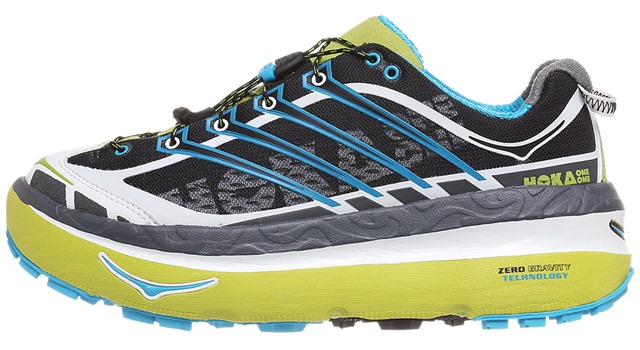
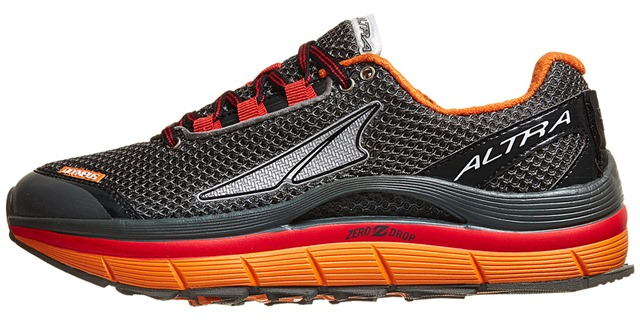
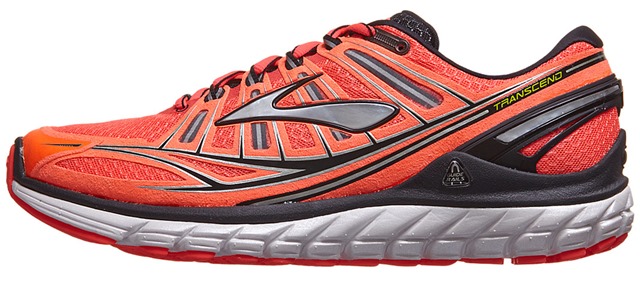
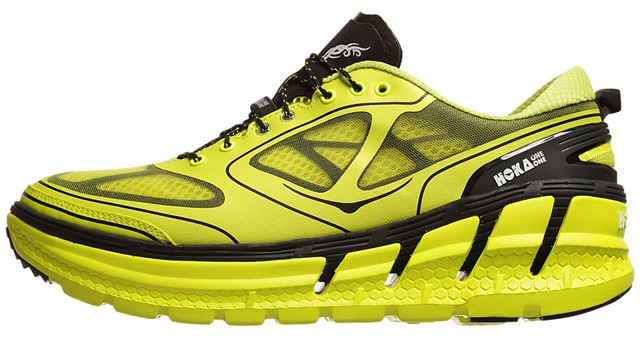

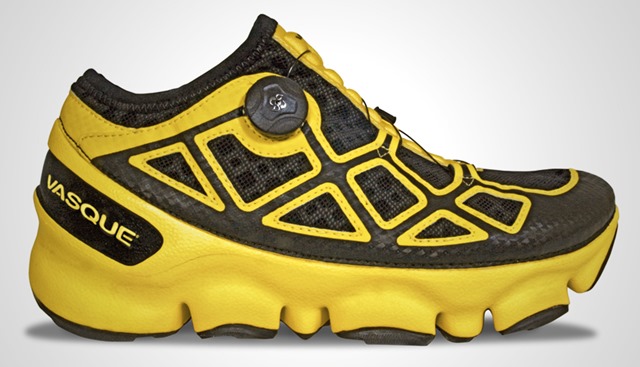
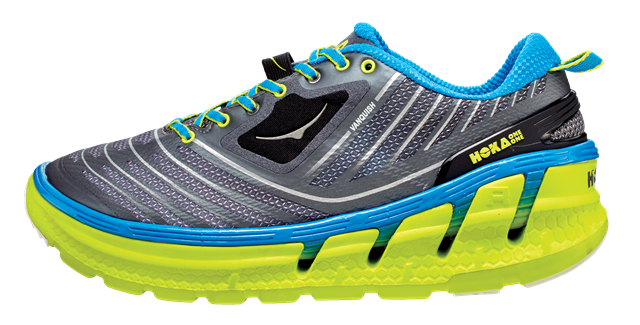

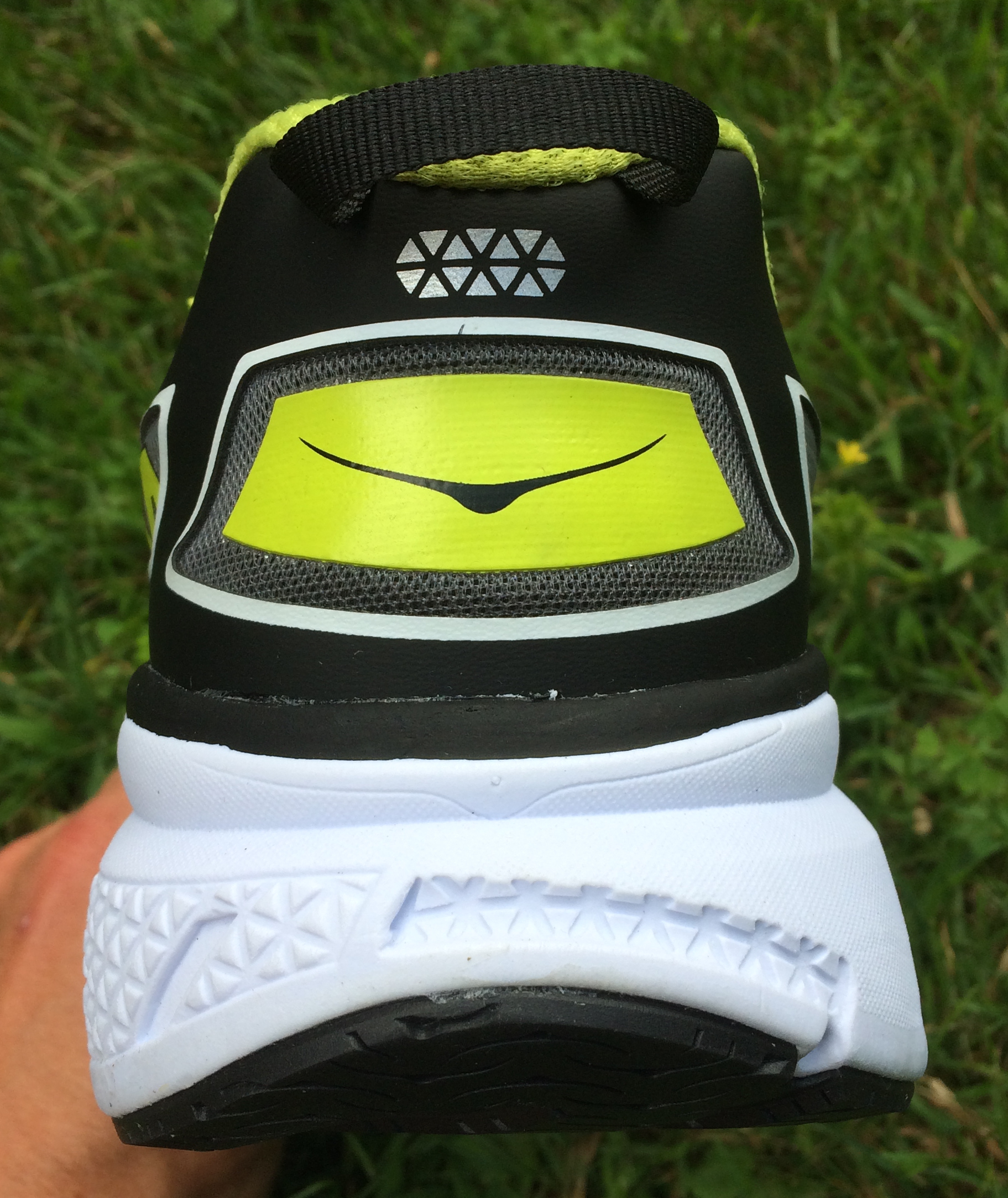















The Transcend is comparable in weight and stack height to motion-controlling shoes from Brooks like the Beast. That kind of shoe seems a poor choice for most recreational runners with little knowledge of good form. Unfortunately, most people are going to believe the stuff about more cushioning equaling more protection from injury. That just ain’t necessarily true, of course.
It’s comparable to most traditional shoes on the market, not just motion control. It’s basically a good looking, plush, expensive traditional shoe with some new stability tech they are marketing (“guide rails”). Does it do what they claim? Who knows.
It does, I land on side and so far transcend allowed me to run painless. My problem with hem is they are too narrow so searching for alternatives.
I couldn’t agree more Peter. I think talk of a maximalist trend is premature with many of the shoes deemed maximal not that different to conventional running shoes. As you stated above, the Hokas and the Altra Olympus are probably the only current shoes that fit the bill. Hardly a trend but this may change in time. I have a pair of the Olympus and like them a lot but would only use them for extra long runs.
Great article Pete. I got a chance to wear test the Fresh Foam shoes, and since I am a purveyor of Altras, I am now running in the Olympus also. These two shoes aren’t on the same spectrum as it compares to ride, fit, & feel. To lump them together is misleading indeed.
Also as someone who is a convert to a forefoot strike (and tips the scales over 200lbs), I find the additional “lovin” in the shoes a nice break on my feet. I’m really in the belief that rotating your shoes frequently with different drops & stack heights keeps the body guessing and makes me a stronger runner.
Agree totally on mixing it up. How does the Olympus compare to a Hoka?
how about just using the adjective – cushioned?
Cushioning can actually be quantified (Shore index, mm of thickness, % resiliency). By the way, Pete, I suggest that you purchase a little Shore index tool. IMO, cushioning firmness is a lot more important than 0.1 oz precision.
-ist or -ism shoes suggest something mystical, i.e. one needs to “believe” in minimalism, maximalism, Catholicism, Protestantism, Hinduism. They’re just rubber, leather and nylon. A shoe either works for you or it doesn’t. I run in Hokas and Nikes and etc. etc. but I don’t believe in them.
Not to rant too long, but the same thing applies to evolution. I don’t “believe” in the theory of evolution by natural selection. It, like the theory of gravity, just is.
to end on a light note, you might enjoy this classic clip featuring Michael Jordan and Mars Blackmon (aka Spike Lee).
link to youtube.com
Sometimes I think Pete is channeling Mars.
It’s gotta be the shoes!
Technically, you would have to believe in the “theory” of evolution. But “law” of gravity just is.
I agree that firmness is more important. Where do you buy a Shore Index Tool?
Those numbers or total shoe weight, not just sole, and the reason I think weight is important is more perception of comfort than anything. I prefer lightweight shoes just as a matter of preference.
Ideally the shoe manufacturers should provide all of this information for us. Wouldn’t be that hard.
google: shore durometer tool asker C
i don’t recall our Shore tool as being as expensive as the ones that pop up. we got a cheaper one made in China.
Maybe borrow one from one of your shoe dog friends.
re: astronauts. when the first Nikes arrived (Cortez, Kenya Reds, Finland Blues, Waffle Trainers), we called them moon boots.
Is it the shoes, Michael?
It’s gotta be the shoes Rodger.
p.s. while I find my Hokas to be very comfortable and I recover faster from long mountain runs in them,
I black out the “Zero Gravity Technology” text on the sides of their shoes. It’s just dumb. An equivalent would be having a “Perpetual Motion Machine” decal on the side of a Prius.
Damn, I drive a Prius. That explains why I still need to go to the gas station…
Weren’t the astronauts on the moon wearing Hokas?
This needed to be said Pete.. how soon can we start the “Ditch Running Overcomplication Shoe Society”.. DROSS for short..
Or just Shoe Overcomplication Society. SOS.
Talk about a lack of self awareness you guys are the founders
I actually believe shoes are complicated, and that trying to simplify things as is done with these muddy categories makes things more difficult. So if that makes me a founder, so be it.
It would be interesting to know ankle injury rates. I know of one Hoka sponsored ultra runner near me who is suffering continued ankle injury.
The higher the sole the more instability in my view, especially off-road where they have a significant uptake at the moment. Just imagine having a sole 3″ (76mm) thick and how that would be to run a trail in. Apart from possible ankle injury there would likely be additional muscular stress in maintaining balance.
The issue with Hoka that’s different is that the foot sits down inside a midsole “bucket” and the base is much wider than the foot. I think that’s why most people find them reasonably stable. But, catch a rock the wrong way and I could see increased risk.
Seeing the same in our region John.
I thought the Nimbus and vomero were bad!
An injury to “one Hoka sponsored ultra runner” does not exactly represent much in the way of a convincing sample. We saw the same thing with minimal, a few people get injured and all of a sudden the alarms are sounding, yet now we have research showing injury rates are no different in Vibrams and traditional shoes.
My wife was able to overcome an injury in Hokas. So there’s one to balance the other n=1 out.
Of course we saw the same with minimal.
Runners seem to think shoes are magic and will ‘cure’ them!
Your shoe obsession has taken you away from the other things which can cause injury and more worthy of your science filters.
All I’m saying Pete is get back to the science and stop being a cheerleader for a shoe industry based on NO evidence!
Feel free to point me in the direction of the evidence for the shoes you promote.
I’ve been writing about shoes since I started this blog in 2009. Not sure what you want me to get back to.
Shoes influence the way forces are applied to the body, and that can influence injury. Are shoes the only factor in injury? Nope. But they are the one that I have an interest in so it’s what I write about.
Thanks Paul!
Great article.
It seems to me that the marketing focuses on one feature, like “more foam”, and any shoe that adds more foam must exist in that category.
Not all minimal shoes were bad; some are quite good. But when a company follows the trend and removes a bunch of material to make it minimal, without understanding how it acts on the foot, that shoe will perform poorly. Then the “trend” of minimalism looses support in the public.
I fear that the benefits of Hoka will be overshadowed by copy cats that just add foam and think its the same or similar shoe.
Hi Pete-
I’ve been considering some Altra Torin 1.5s which just came out. They are also billed as high cushion. How would this shoe fit in with the ones you have listed, and why would Altra have 2 high cushion shoes like this in their offerings? They look fairly normal to me and I’ve been wanting to try some Altras, currently I’m running in Merrel Bare Access.
Troy – The Torins are Altra’s high-cushioned road shoes, the Olympus are designed for trails. I also do a lot of my running the the Bare Access, but got the Torins (version 1.0 – they’re on sale now) for some easier/longer runs.
The Torins don’t seem like truly maximal shoes to me (definitely not in Hoka territory), just something on the more cushioned end of a normal road shoe. Coming from the Bare Access, you’ll definitely notice the extra cushion (and the couple extra ounces on each foot). And yes, they don’t look as outrageous as some of the max-cushioned offerings.
Thanks! I really like the Bare Access, but as I add miles, I notice my feel feeling a little sore. I have started running a little bit more often on trails, and that helps a lot, but there aren’t a lot of trails where I live and I end up on sidewalks more often than not. So I was hoping the Torin might be a good addition to my rotation.
I wear Merrell Road Gloves or thin huaraches for a lot of pavement running, so am used to very little cushion underfoot. I do also have a pair of Altra Torins and they feel nice on those days that I don’t really want to feel every grain of sand underfoot. They fit quite similar to the Merrells and are okay for flexibility. Altra makes a quality product – you should check them out.
I cannot see a purpose for these shoes in all honesty. I find the look of the hokas and these maximal shoes to be almost cartoon and clown like. I run mostly in kinvara, 1400s, and adios sneakers. I hate to go above 9 oz in my running shies. I would maybe bite the bullet and go up to 10oz for a recovery shoe but anything bigger I find too clunky and go against my running gait.
I am running in the Hoka Bondi 2 coming back from stress fractures in my left tibia. These shoes have been great for that purpose.
I have normally run in the Mizuno Cursoris (zero drop) so it’s a big switch for me. I like the cushioning but the Bondi have a 5 mm drop. A 2mm would be better so I’m looking forward to the Huaka.
One aspect of the Hokas that I haven’t liked is the narrower toe box which is one of my favorite design characteristics of the Cursoris.
Pete, do you know what the footprint is going to be like in the Huaka & Clifton models? Toe box width is an advantage in the Altra but they still aren’t as cushioned as the Hokas.
Bart, keep an eye out for the Altra Paradigm – supposed to be the road-oriented counterpart to the Olympus. Slated to come out sometime this summer, likely around the same time as the Huaka/Clifton release date.
Sam Winebaum has some good photos and details: link to samwinebaum.blogspot.com
Thx for the info Dad. I’m looking forward to the choice.
I am running in the Hoka Bondi 2 coming back from stress fractures in my left tibia. These shoes have been great for that purpose.
I have normally run in the Mizuno Cursoris (zero drop) so it’s a big switch for me. I like the cushioning but the idea of a 2mm drop and lighter shoe is great.
One aspect of the Hokas that I haven’t liked is the narrower toe box which is one of my favorite design characteristics of the Cursoris.
Pete, do you know what the footprint is going to be like in the Huaka & Clifton models? Toe box width is an advantage in the Altra but they still aren’t as cushioned as the Hokas.
I don’t, my guess is the Altra Olympus will has the wider toebox.
Mr.Larson I saw a sneak peak of 2014 shoes heres the link:
link to runningmagazine.ca
There’s are a lot of very cool shoes coming out, but one that caught my eye is a shoe by Altra. They don’t have a name yet but the are COMPLETELY zero drop, without a higher arch. They will be the first cushioned shoe that will have this feature to my knowledge. THANK YOU ALTRA a company finally listened!!! They are an Utra cushioned a but I hope they make a regular cushioned version as well.
All Altra shoes are zero drop.
While im not sure about Altra. The New Balance Minimus Road Zero was advertised as Zero Drop but had a higher arch height which does not make them “true” zero drop. In my opinion all Atra shoes have an slight rise in the arch and it doesn’t look like they decouple the heel and forefoot so “aesthetically” it looks like the arch has a higher stack height than the forefoot and heel which makes me believe that its probably arch height is higher. If you look at the picture of the new Altra Shoe its look like the midsole is completely flat, even though it has border that raises up but it does not look like its part of the midsole.
Whatever credibility you had left has now gone.
#ConfusedScientist
Why?
“The saddest thing about selling out is just how cheaply most of us do it for.”
― James Bernard Frost
You have no Philosophy and have become a fence sitter.
For me you have lost your way and have become a shoe bore and left the science behind.
My philosophy is quite simple. People are variable, and will have variable needs. Some will do better in minimal, some in maximal, some somewhere in between. No one category is inherently superior to any other. And mixing things up (shoes, surfaces, speeds) is probably the best approach in order to vary stress applied to the body. This has been my philosophy since I wrote my book almost three years ago now.
Please inform me of the science that tells me I should advocate heavily for one type of shoe over the others?
If my lack of desire to be dogmatic makes me a bore, then I’ll happily be called a bore.
Middle of the road will always pay the bills.
Please inform me of the science that tells me running shoes of any type reduce injury and improve performance.
I’ve been asking brands for years…still waiting.
On improving performance, good summary here for racing flats: link to runnersconnect.net.
Rodger Kram, who has also commented here on this post, has shown that the presence of a moderate amount of cushioning underfoot improves running economy: link to ncbi.nlm.nih.gov
Adidas has shown that their Boost material provides a significant economy benefit over EVA foam: link to tandfonline.com.
Newton has shown an economy benefit of lugs vs. no lugs: link to tandfonline.com.
On injuries, data isn’t as clear and is mostly biomechanical and indirect. Form changes from barefoot to shod, forces move around, different types of injuries result. Shod probably more knee/hip, barefoot probably more foot/ankle. But the reality is that the vast majority of runners are not going to run barefoot full-time, so we try to figure out the best approach we can with shoes.
Recent paper by Ryan et al., showed that injury risk was not different in Nike Pegasus vs. Vibram Fivefingers, but elevated in Nike Free, so shoes do differ and can effect injury rates. Runners in the VFFs had increased calf pain. link to bjsm.bmj.com
Another very recent study showed that rotating running shoes can reduce injury risk (my basic philosophy). link to ncbi.nlm.nih.gov
Relevant to this post, a recent study showed that a rocker bottom shoe (Hokas are rocker bottomed) can reduce pressure under the forefoot. Not an injury study per se, by might explain why my wife and others have found them useful in the management of forefoot injuries: link to ncbi.nlm.nih.gov. Anecdotes combined with biomechanical data can form the basis for a more targeted injury trial to specifically address the question of whether such a shoe can in fact beneficial in treatment of neuromas, metatarsalgia, stress fractures, etc..
And if you view shoes as nothing more than a type of orthotic device, you can get into the mountains of studies on orthoses and injury/pain management, summarized here: link to summaries.cochrane.org
I personally would like to see a lot more targeted studies looking at particular shoes and their influence on particular types of injury, and I’m confident those will come with time.
These are just a few studies that immediately pop to mind, so to say that there is no science on shoes as they relate to performance benefits or injury prevention is flat-out wrong.
Pete has always taken a cautious and sober view of the running shoe industry and has not been one to jump on the various band-wagons that have come by. He didn’t urge us to throw out our shoes after “Born to Run” and he’s not advocating more-the-merrier when it comes to cushioning today. He has commanded respect, and a following, from both ardent barefooters, and influential people who you might say are somewhat more traditional in their footwear dogma (Simon B.).
Keep doing what you do Pete. Though you have never been a dogmatic preacher of the science of shoe-dom, your underlying philosophy has remained unchanged. And good job resisting the desire to feed the trolls.
Having a opinion different to you/Pete makes me a Troll?
Telling someone they’ve lost all credibility without having the decency to explain why without prompting is what makes you a troll in my eyes.
The Running shoe industry takes the temperature of the market and promotes to that level.
They don’t lead with science or adventure and are led by a real Troll like Simon B who Pete is in danger of turning into.
Simon is someone i had respect for many years ago when he had interesting ideas/theories on this subject,unfortunately he is just rolled out to muddy the waters now and has become a sad reflection of the man he could have been and should have been….Be careful Pete that could be your future.
Calling someone a troll to control opinion is at best cowardly and at the very least
deceitful.
If you genuinely think that’s trolling then you need to grow a pair and except people might think differently to you.
While I respect your right to express your opinion I couldn’t disagree more. Over the past few years Peter has been a consistent voice of reason in the debates about footwear. While many dogmatic bloggers have come and gone, Peter continues to have widespread respect among runners of many persuasions.
Thanks Dave!
Pete, while I normally advocate ignoring the trolls and hope that they go back under the bridge from whence they came, I was really glad to see your comment above detailing benefits of various shoes/shoe technologies (can’t respond directly to that one, as that comment thread is maxed out).
Anyhow, just thought I’d mention that the topic might prove worthy of a future blog post – it would be handy to have a review of the current science supporting running shoe technology, and your thoughts on what research is unclear/still needed in that regard. I know you’ve posted on many of those topics separately, but it could be nice to have it all in one spot (or perhaps it’d just be too lengthy & unwieldy!).
As always, thanks for the engaging and respectful discourse here.
This debate/argument has confused me to the point where today I wore a minimal shoe on one foot and a maximal shoe on the other. Weird, everything came together in my head.
Watch out for that artificial leg length discrepancy!
This could be a great way to counteract the effects of road camber! I smell a new study!
It would seem that some here are projecting a reading on Pete’s words that differs significantly than what is actually written.
Pete’s academic background shows in everything he writes: he is accurate; he writes on what is observable if not measurable; and he evaluates trends critically through the tempered lens of history. That’s what makes this blog a good read.
I am not an expert on running nor on running shoes, but I run tons and buy tons. (Maybe if I stay at a Holiday Inn Express for my next road race…) This is a good place to learn more about these things and be prompted to think about things that otherwise would not have occurred to me in isolation.
Thanks, Pete!
Thanks, I appreciate the support!
I thought you appreciate neutral rather than support :-)
I agree that the language has become muddled some with terms like ‘minimalist’ and now ‘maximalist’ being used a bit more in the conversation. My position is that finding the right shoe for the right person is always the end goal.
Though levels of cushioning vary, many other factors are needed in a fitting too, notably injury history, biomechanics, form, and even a person’s weight. The terrain factors in too (roads vs. trails). Models from Hoka and other companies are simply creating what runners are asking for. As the feedback changes, the shoes change accordingly.
“Among the new crop of maximal shoes, Hokas remain unique, and few shoes really compare. They combine a ton of soft cushion, a bucket sole where the foot sits down within the midsole, and a rocker bottom that feels very different than most other shoes.”
Nailed it! Hoka has obviously become a major brand in the ultra world in a short period of time because they make very good, unique products.
I generally still prefer low drop, light-weight, firm, low-to-the-ground shoes, but having one Hoka in the rotation can be good for time-on-the-feet runs, easy runs, doing downhill speed work, or if you’re trying to build mileage with minimal damage to the body.
Could you change the prompt from-
‘SPEAK YOUR MIND’to
‘SIT ON MY FENCE’
I wont bother you any-more and will leave you and your followers to carry on the appreciation society.
I’m all for discussion and debate (in fact, Simon and I have had our share of spirited debate in the past), but attacking credibility and posting personally insulting hashtags as a first comment does not warrant thoughtful discussion.
If you want to read my thoughts on shoes, injuries etc. buy my book or read through the 1000+ posts here on this blog. But I suspect that answer won’t much satisfy you.
Pete
Not to be picky, but you overstated our findings a bit.
we found that on a hard surface the energy costs of running in lightweight shoes vs. no shoes were equal across subjects. cushioning saves energy but weight costs energy.
some individuals had substantial savings when running without shoes on a cushioned surface, but the average difference was not statistically significant.
The study I linked was the Tung et al. study where you found:
“Compared to running unshod on the normal belt, running unshod on the 10-mm-thick foam required 1.63% ± 0.67% (mean ± SD) less metabolic power (P = 0.034)”
In the comment I wrote that “a moderate amount of cushioning underfoot improves running economy” which I think is an accurate statement based on your results.
If we want to specifically talk shoes (i.e., the Franz et al. study), then what you are saying is correct. Shoes provide a benefit only when you control for weight. As you have written in the abstract of your other study here:
“… for footwear conditions of equal mass, shod running had ∼3%-4% lower V˙O(2) and metabolic power demand than barefoot running (P < 0.05)." link to ncbi.nlm.nih.gov
The practical reality is that a moderately cushioned shoe provides a protective benefit without a metabolic cost since the weight penalty is balanced by the benefit of cushioning.
yeah, you got it.
we also did shoes (Nike Free 3.0) in the Tung study.
the Franz study used the super light Mayfly shoes.
p.s. glad that Lynn Jennings is still alive on Earth. I used to live in Harvard, Mass.
In your next study I’d like to see a comparison of barefoot vs. moderate cushioning on asphalt chilled to 10 degrees or heated to 120 degrees Fahrenheit.
yeah, I think you could cite Badwater ultra as an instance where shoes enhance running performance.
link to sportsillustrated.cnn.com
The Skechers GOrunultra is the best trail shoe I have ever worn. After 3 years in Hokas I have made the switch.
I think it is wrong to overlook these 2 categories.
Zero drop.
Some drop.
Now within these 2 categories we have many different tread patterns, shapes, weights and stack heights. Within the “some drop” category you will have many different drops from 4 to 14. Anything more than 4 drop quickly approaching a heel strike shoe.
This is how I “see” shoes.
Remember its not the shoe that makes a ‘heel strike’ regardless of the drop, its the runner wearing them. I have 12mm drop shoes but my heels never touch the ground, and zero drop where the same is true
I found moving away from heel striking, much easier and more appropriate with a zero drop shoe rather than my traditional 12 mm drop shoes. Big heel shoes usually have nothing in the front for cushioning and also tend to throw me forward when I want to be flat.
I use all my old, drop shoes, for walking and grocery getting.
Hi Pete,
I just bought the Hoka Conquest and am liking them so far, albeit after only 2 runs of 20-25 min. I am pretty much sold on the shoes. I can do without some of the triathlon specific features like speed laces and the heel-pull thingy, but the soles themselves are really helping relieve my shin pain when running on concrete and pavement, where I do all my running.
I just wanted to point out that, according to the Hoka website, the Conquest are listed as 29/25 stack, not 34/28 as you have listed above. Not sure which is correct, just though I’d bring it up in case you want to measure for yourself. Even if they are 25mm forefoot, it seems to do the job admirably.
link to hokaoneone.com
Could be that Hoka is reporting measurements without the insole. I still need to take a look at your gait videos, totally forgot! Sorry, been crazy busy lately.
no worries
Have you heard anything about the “maximalist” shoes helping people who suffer from reoccurring shin splints? I keep getting shin splints every time I try to build mileage, despite trying to do it slowly and carefully. I’m in recovery right now and since I’ll have to start back up slowly it seems like a great time to try new shoes. I can’t decide if I want to try to go minimalist or try something like the Hoka One One. I know I over pronate and I’ve been incorporating foot, ankle and hip strengthening exercises to try to remedy the issue. The stability shoes that I was previously fitted for at a local running store have done nothing to help prevent my shin splints.
Have not heard anything specifically in reference to them helping shin splints. Is the pain in the front of your shin or on the inside above the ankle?
I’ve recently had surgery on both hips to repair torn labrums. I can’t run for a while, but in looking towards the future…do these thicker soled shoes actually reduce or absorb the pounding? Part of me thinks that lower profile (which I used before the surgeries) would be better since it would help with better form. But part of me thinks the thicker soles would help protect my hips. Any thoughts?
Unfortunately there’s not a lot of data to point to one type of shoe vs. the other for hip issues. There is some data that suggests that a shorter, quicker stride might help reduce hip loading, and a more minimal shoe might encourage that, but I actually find that running in Hokas somewhat paradoxically makes run in a way that feels similar to running in a more minimal shoe. Best you can probably do is try both and see which feels better, sorry I don’t have a better answer!
No problem, thanks for the feedback. No easy answers for this type of injury.
Run in POSE
Was surfing around and saw this and while I may be late to the party…..
The Hokka Conquest is a great sneaker. With getting older the body just does not instantly recover/heal like it used too. The Conquest has been the great for me. I have had knee surgery, heel spurs , a torn Achilles and plantar facilities on both feet, just too mention the lower body injuries. I could never go more than a few miles before the Conquest. I just did a half marathon and know for a fact that I never could have gotten thru the training and the race without the Hokkas.
Omg!!! great piece and so so so correct. I critically reviewed the Asics 33 on RW Website. Only truly the Hoka can be considered a Max shoe. So blurred I feel like I’m in a snow storm. Go to CO and enter an Ultra race and you will see over 50% of the competitors in Hoka. True story. I love the concept of these shoes. Minimal taken to the marketing extreme has common core principals that were necessary for the development of shoe technology in the 90’s when at that time everything was bulky, stiff and heavy. I run in POSE, a technique that goes hand in hand with any shoe that has a low drop. But too much negative energy from minimal shoes is like a Nascar car running into a non safer barrier wall and straight into cement. In turn the negative vibration, energy ultimately causes fatigue. straight from the ground right up to the body. You will at some point be injured. You certainly don’t see marathoners running in Vibrams now do you. Pete, I remember when you were critical of the Hoka shoe in your first experience with the brand and I applaud you on being very diplomatic in your read, but lets face it. Your wife, injury free for 9 months, even running faster and more efficiently I’m sure, is a testament that minimal shoes are a blown out marketing mess. Thats WHY the Hoka shoe came onto the scene. Take the principals of natural running, low drops, use correct technique and you can run in ANY shoe but the Hoka has saved peoples lives!!!! It did mine. In the first week I wore Hokas I ran 15 extra miles with no extra recovery time and I never looked back. I was injured from running in Newtons and had nasty shin problems that required a year of ART and Graston. Yeah Newtons, Energy Return System, They don’t tell you that “energy” is gonna F you up. None the less I see you’re coming around and I really liked what you said. Mis categorized for sure and clouded to say the least by the industry.